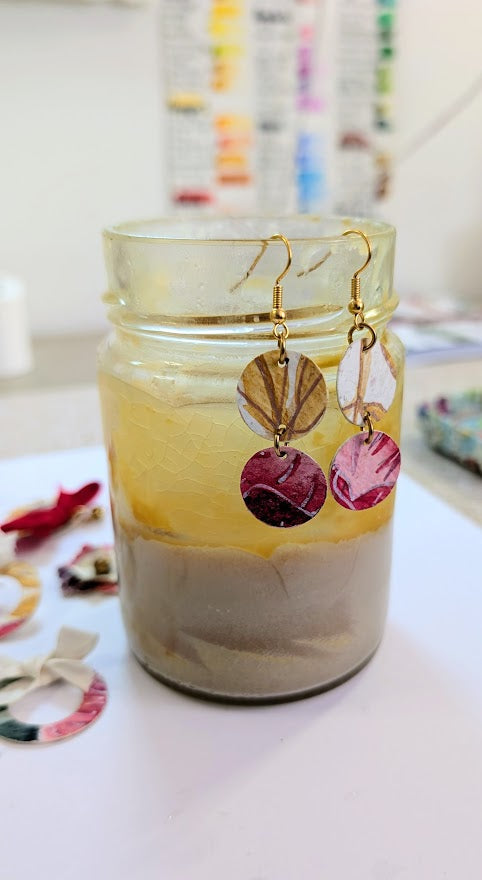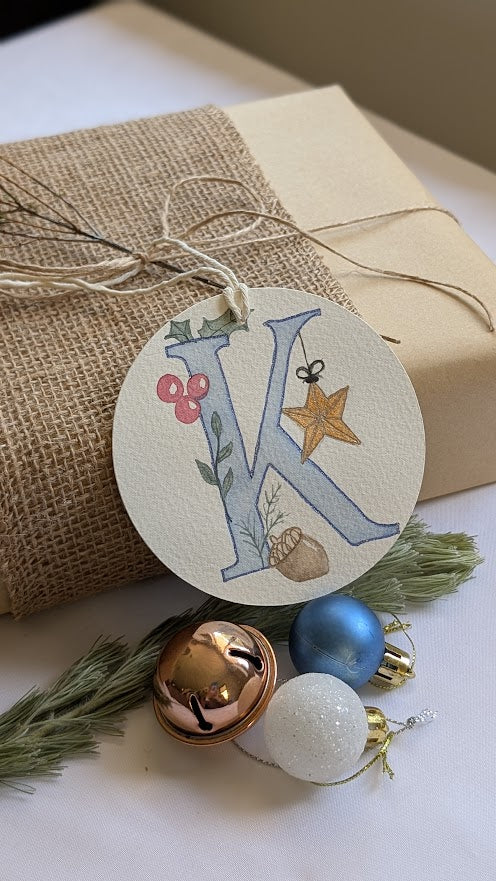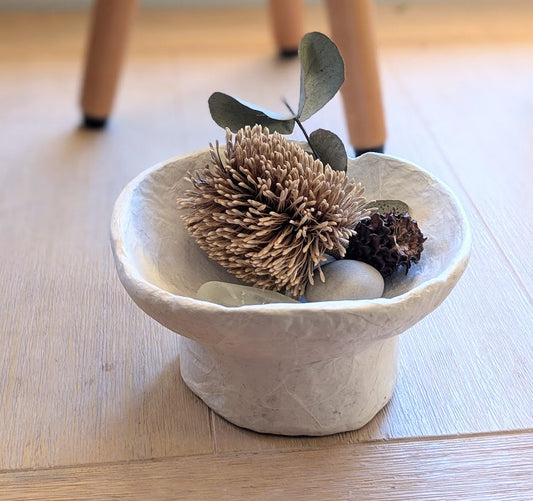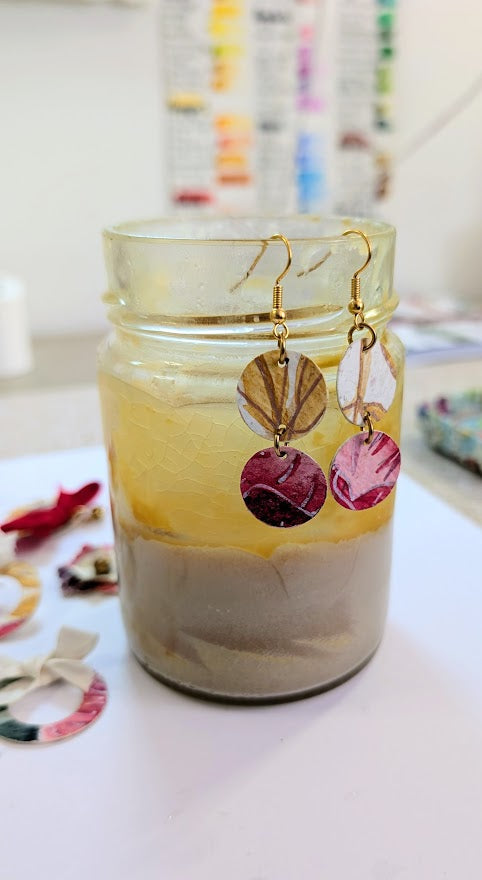
Making My Own Natural Wax Sealant: A Sustainable Alternative
Making My Own Natural Wax Sealant: A Sustainable Alternative
One of the guiding values of my work at Paper & Palette Studio is finding ways to create beautiful, functional pieces without relying on plastics or synthetic finishes. From earrings and bookmarks to handmade paper trays and bowls, every product I design is built on the idea of being gentle on the planet while still lasting the test of time.
That’s where my natural wax sealant comes in.
Instead of using chemical-based sprays or varnishes, I make my own protective finish using just two simple, plant-based ingredients: carnauba wax flakes and tung oil.


DIY Natural Wax Sealant Recipe
If you’d like to try it yourself, here’s the simple recipe I use. It makes about 1 small jar (100 ml) of wax.
Ingredients
🟡 20 g Carnauba wax flakes
🟡 80 ml Tung oil (substitute linseed or walnut oil if needed)
Equipment
- Heatproof glass jar or bowl
- Small saucepan (for a double boiler)
- Wooden stir stick or spoon
- Clean storage jar with lid
Method
- Set up a double boiler: Fill a saucepan with a little water and place your heatproof jar/bowl on top.
- Add ingredients: Place the carnauba wax flakes and tung oil into the jar.
- Heat gently: Let the wax slowly melt into the oil, stirring occasionally.
- Mix well: Once dissolved, stir until smooth.
- Pour & cool: Carefully pour into a clean jar and allow to set.
As it cools, it thickens into a golden, buttery polish.
How to Use
- Apply a small amount with a soft cloth or brush.
- Rub gently into the surface (wood, paper, or handmade objects).
- Let it absorb, then buff lightly for a soft, natural sheen.
Why I Chose These Ingredients
Carnauba wax is often called the “queen of waxes” because it’s one of the hardest natural waxes available. It’s renewable, biodegradable, and gives a smooth, glossy finish without synthetics.
Tung oil has been used for centuries to protect wood. It penetrates deeply, cures to a tough finish, and is completely plant-based. When blended with carnauba wax, it creates a rich, amber polish that hardens beautifully.
Both ingredients are plastic-free, renewable, and perfectly aligned with my sustainability-first approach.

The Question of Sustainability and Ethics
Because sustainability is at the heart of what I do, I’ve taken time to look into where my ingredients come from—especially carnauba wax.
Carnauba wax is harvested from the leaves of palms in north-eastern Brazil. The process is renewable—the trees aren’t cut down, and leaves can be harvested several times a year without killing the plant. These palms also support local ecosystems by protecting soil and water.
However, there are ethical concerns. Some reports highlight unsafe working conditions, long hours in the sun, and very low pay for harvesters. In extreme cases, the industry has even been linked to forced labour.
The good news is that change is happening. Initiatives like the Initiative for Responsible Carnauba (IRC) and the Bioethical Carnauba Seal are improving traceability, ensuring fair labour standards, and supporting biodiversity. Some suppliers are also becoming transparent, showing how they care for both workers and the environment.
The Ethics & Sustainability of Tung Oil
Tung oil is pressed from the seeds of the tung tree. It’s one of the earliest known “green” finishes—completely plant-based, zero-VOC, biodegradable, and food-safe. That makes it a wonderful alternative to petroleum-based varnishes.
Sourcing matters, though. Some suppliers now demonstrate how tung oil can be farmed ethically and sustainably. For example, projects in Vietnam partner with indigenous communities to grow tung trees within agroforestry systems, ensuring fair wages, sustainable land management, and eco-conscious processing. Cold-pressing seeds, composting byproducts, and recycling water are all part of these improved practices.
When responsibly sourced, tung oil becomes not only a safe finish but also a driver of positive environmental and community outcomes.
As a maker, I believe it’s not enough just to use natural materials—it’s also important to ask where they come from. Choosing responsibly sourced carnauba wax is one more step towards aligning creativity with sustainability and ethics.
How I Use It in My Work
I apply this sealant to my handmade paper trays, bowls, and even on the surface of my watercolour jewellery pieces. It adds:
🌱 Durability – helping my pieces resist moisture and daily wear.
✨ A natural sheen – enhancing colours without glossing over them.
💛 Peace of mind – knowing every finish I use is safe, biodegradable, and kind to the planet.
Why It Matters
For me, sustainability isn’t just about the raw materials—it’s about the entire process. Choosing natural sealants over synthetic sprays may seem like a small step, but it’s part of a bigger movement to reduce waste, avoid toxins, and keep creativity aligned with eco-friendly values.
Every time I use this wax, I’m reminded that natural solutions are not only possible but often better.



